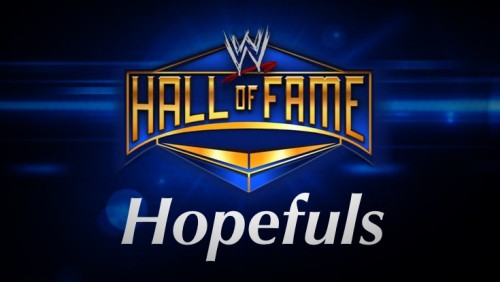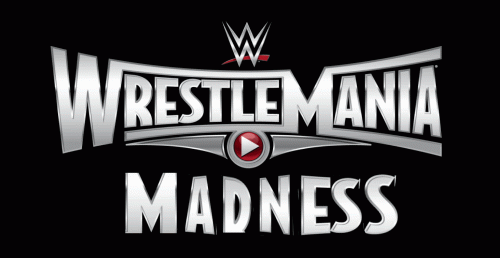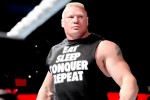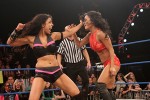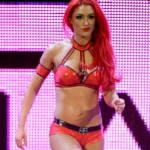Hall of Fame Hopefuls
Part Five: Headliners
Written by Mark Adam Haggerty
Ladies and gentlemen welcome to the fifth and final chapter of "Hall of Fame Hopefuls," exclusively available at Cheap-Heat.com. My name is Mark Adam Haggerty and over the past month I've had the chance to chat about some of the most iconic talents to ever be featured in-or-around a professional wrestling ring. We began with tag teams, moved on to the celebrity wing, then to managers and broadcasters, and last week I named the most deserving Divas whom I believe belong in the WWE Hall of Fame. For this ultimate edition, we're listing ten possible headliners for future Hall of Fame classes. These are the men who will fill the same sort of role as Hulk Hogan, Shawn Michaels, the Ultimate Warrior, and of course the "Macho Man" Randy Savage. Let's kick things off with the only Olympic Gold Medalist on the countdown.

Kurt Angle
Kurt Angle is among the greatest technicians in the history of professional wrestling, and might be the greatest active competitor inside a squared—or six-sided—circle. After taking home top honors at the 1996 Summer Olympics, Kurt Angle was at a loss for how to continue his athletic career. After much soul-searching he decided to try his hand at professional wrestling and made his in-ring debut for the National Wrestling Alliance on October 24, 1998. Angle was spotted by the WWE immediately and first appeared for the �Federation at the Survivor Series the following year. Angle enjoyed a dominant winning streak lasting over two months and made history when he won the WWE Championship from the Rock at No Mercy 2000, just eleven months after debuting. A former King of the Ring, Kurt went on to achieve unprecedented honors including the WWE, WCW, and World heavyweight championships—in addition to secondary belts like the U.S., Intercontinental, European, Hardcore, and tag team titles. Although the "Wrestling Machine" has been absent from World Wrestling Entertainment for nearly a decade, it's safe to assume his seat will always be ready, should he decide to take his place amongst the "Immortals."

Triple H
The man that would one day become Triple H started his career in 1992 after training with the legendary Killer Kowalski. He debuted for World Championship Wrestling in 1994 as Terra Ryzing, but was soon repackaged as "Jean-Paul Levesque"—a French nobleman with a finishing maneuver known as the "Pedigree." He signed with the WWE in 1995 and brought his aristocratic act to a whole new audience as the "Connecticut Blue Blood" Hunter Hearst-Helmsley. Triple H teamed with Shawn Michaels in 1997 to form D-Generation X, which Hunter continued to lead clear into the new millennium. Triple H won his first world title on an episode of Raw following Summerslam 1999 and has since become one of the most decorated performers in WWE history. A 13-time world heavyweight champion, Triple H is also a former King of the Ring, Royal Rumble winner, and a member of BOTH the Wrestling Observer Hall of Fame and the International Sports Hall of Fame.Triple H has scaled back on in-ring competition since taking a job in Titan Towers in 2010, where his main focus has been on creative and talent relations. Triple H is a lock for the WWE Hall of Fame—the only uncertainly is when we might see it happen.

The Rock
Dwayne "The Rock" Johnson has been igniting the box office for 15 years, but got his start in entertainment by "electrifying millions—and millions" of people around the world. The Rock debuted for the WWE in 1996 at the Survivor Series as "Rocky Maivia"—a name created by combining Rocky Johnson with Peter Maivia—in honor of his father and grandfather. Audiences didn't take to the Jerri-curled babyface and soon began to greet the future "Great One" with chants of "Rocky Sucks" and "Die, Rocky, Die." The Rock found himself in the driver's seat of the Nation of Domination after ejecting their former leader Farooq, and by 1998 was well on his way to world heavyweight title. The Rock became the WWE champion at the Survivor Series that year when he "screwed" Mick Foley in the "Deadly Games Tournament." The Rock held numerous championships during his time with the WWE, but made his greatest mark in ways that no previous Superstar could have imagined. The December 1998 pay-per-view—Rock Bottom—was named for the champ, but that was only the beginning. In 1999 the WWE debuted Smackdown—a phrase made popular by the Rock—which led to an enormously popular video game series by the same name. The Rock returned to the WWE in 2011 to host Wrestlemania XXVII, and went on to win the WWE championship for an 8th time at the Royal Rumble in 2013. If the Rock isn't worthy of the WWE Hall of Fame—then why does it exist?

Sting
Steve Borden began his wrestling career much the same as fellow Hall of Famers Bret Hart and Shawn Michaels—as part of a tag team. Borden was originally one-half of the Blade Runners with the man who would one-day be known as the Ultimate Warrior. Originally referred to as "Blade Runner Flash," Borden would ultimately change his name to Sting. He debuted for Jim Crockett Promotions in 1987 and quickly engaged in a heated rivalry with Ric Flair and the Four Horsemen. Sting won his first world title on July 7, 1990 from the "Nature Boy," and by 1991 was considered the "Franchise" of World Championship Wrestling. When the New World Order started to take over WCW during the summer of �96, Sting went into hiding and returned in the rafters where he proceeded to watch the events of �97 unfold. Sting finally met "Hollywood" Hogan for the WCW championship at Starrcade 1997, where he defeated the former Hulkster and regained the title on behalf of WCW. Over the next several years, Sting's character would evolve and alternate allegiances, even aligning with Kevin Nash and the NWO Wolf Pac. Sting had the privilege of performing in the main event of the final Monday Nitro in March of 2001 against his longtime nemesis, Ric Flair. When the company closed, Borden opted not to join the competition and instead signed with the WWE alternative Total Nonstop Action Wrestling in 2003. Sting's induction seems all-but-imminent now that the "Vigilante" has signed with the WWE—14 years removed from the Monday Night War. Sting is also a longtime resident of the "Lone-Star State"—the site of next year's potential record-breaking Wrestlemania—so now seems like a perfect time to consider him for the WWE Hall of Fame.

Chris Jericho
The self-professed "Ayatollah of Rock and Rolla" is one of the most diverse performers to ever lace-up a pair of wrestling boots. Chris Jericho started his journey toward the WWE Hall of Fame in 1990 when he began training under the highly-acclaimed Hart Brothers. Jericho traveled the world and learned various nuances of the business during his time in Mexico and Japan, and eventually debuted stateside for Extreme Championship Wrestling in 1995. It wasn't long before national promotions started to take notice of young "Lionheart" and in 1997, Chris Jericho signed with WCW. He achieved mild-success while employed by Turner, engaging in memorable rivalries with high profile talents such as Dean Malenko and even Bill Goldberg. Jericho joined the World Wrestling Federation in 1999 and made his long-awaited debut by interrupting the Rock on Monday Night Raw. Chris Jericho holds the record for most intercontinental title reigns at nine, and is further renowned for being the very first Undisputed Champion in WWE history. Jericho is the WWE's 4th Grand Slam Champion, coming in just behind Hall of Famer Shawn Michaels, as well as current "Authority Figures" Triple H and Kane. Chris Jericho has been able to withstand the test of time by reinventing himself and relying on the number one rule of showmanship—"always leave them wanting more." Chris is an aspiring actor, a successful podcast host, and most notably—he is the lead singer for the hit heavy metal band FOZZY. Hopefully Y2J will "save us" from boring speeches when he inevitably accepts the honor of being added to the WWE Hall of Fame.

John "Bradshaw" Layfield
John "Bradshaw" Layfield signed with the WWE in 1995 and has remained involved with the company to some degree ever since. He began as the Texas roughneck Justin "Hawk" Bradshaw, an homage to clichéd Sports Entertainment cowboys such as Stan Hansen and Black Bart. Bradshaw found much of his early success in the tag team ranks, both with Barry Windham as the "New Blackjacks," and later with his longtime partner Ron Simmons in the APA. Bradshaw and Simmons won the WWE tag titles on three separate occasions before finally separating in 2004. By this time, Bradshaw's real-life role on Wall Street started to seep into the storyline, and the JBL character was born. John "Bradshaw" Layfield formed his "Cabinet" and took the WWE Championship from Eddie Guerrero in a bloody Bull Rope Match at the Great American Bash. His record-breaking streak as champion came to an end at Wrestlemania 21 when he dropped the coveted title to John Cena. JBL remained adamant about regaining his gold, but failed to do so, instead choosing to focus on secondary singles titles such as the United States and Intercontinental Championships. Today Bradshaw is a color commentator on Monday Night Raw and hosts a daily radio segment with Michael Cole. If Jerry Lawler and Booker T are going to flash their Hall of Fame jewelry at ringside, then so too should John "Bradshaw" Layfield.

Goldberg
Bill Goldberg was an Atlanta Falcon who entered the world of professional wrestling in 1997 after training at WCW's Power Plant. Goldberg immediately turned heads with a physical presence unlike anything wrestling fans had ever seen. His matches might have been short, but they added up to an astounding 173-0 winning streak lasting until Starrcade 1998. Goldberg lost the title but maintained his winning edge, only losing to a select few individuals such as Kevin Nash and Bret "The Hitman" Hart. Goldberg was loyal to World Championship Wrestling until its dying day, and opted to sit-out the remainder of his contract, rather than sign with World Wrestling Entertainment. Goldberg made his WWE debut on the Monday Night Raw following Wrestlemania XIX in Seattle, where the former-Falcon warned the Rock: "You're Next!" Goldberg was featured prominently on the WWE's Raw brand during his year with the company, and won the world heavyweight championship from Triple H in a "Title vs. Career Match" at Unforgiven 2003. Goldberg's final match with the company would be a polarizing affair featuring Brock Lesnar with "Stone Cold" Steve Austin as the guest referee. While the match left a lot to be desired, Bill Goldberg walked away victorious and even shared a ceremonial beer with the "Rattlesnake" before getting 'Stunned himself. Goldberg might not have been the most technically proficient superstar in wrestling history, but he sold tickets and remains a household name almost 20 years after his debut.

Owen Hart
There are a variety of reasons why Owen Hart has yet to be added to the WWE Hall of Fame; his widow Martha is adamant that he not be included, although his brother Bret seeks closure and continues to pressure Martha into changing her mind. The logistics of the situation aside, Owen Hart is one of the most deserving professional wrestlers who's yet to receive a WWE Hall of Fame acknowledgment. Owen began learning his craft under the tutelage of his famed father Stu Hart. His wrestling career was hindered as his debut in 1983 came during a time that Vince McMahon's World Wrestling Federation was acquiring Stu's Stampede territory. Owen wasn't afforded the chance to learn on his family's home turf and instead made a name for himself on the independent circuit before being signed to the WWE in 1988. Owen competed as the Blue Blazer and was even featured at Wrestlemania V against Mr. Perfect. Owen left the WWE and spent time back at home in Calgary, as well as in WCW, before returning to the �Federation in 1993. Beginning in the autumn of '93, Owen entered into what would become a defining program in his career—a bitter year-long rivalry with his older brother Bret. The two first met at �Mania X where Owen got the best of Bret, and then again at Summerslam in a 5-star championship cage match wherein the "Hitman" emerged victorious. Owen became a celebrated tag team specialist alongside partners like Yokozuna, the British Bulldog, and Jeff Jarrett. In addition to numerous tag team accolades, Owen is a former intercontinental champion, European champion, King of the Ring, and 3-time Slammy Award Winner. Sadly however, Owen lost his life in a tragic accident at the Kemper Arena on May 23rd, 1999; Owen Hart was a world-class performer who most certainly deserves one final "Wrestlemania Moment" as his memory is honored in the WWE Hall of Fame.

The Undertaker
Mark Calaway stood nearly seven feet tall and was originally brought to the mainstream by WCW in 1989 as "Mean Mark Callous." He replaced Sid Vicious as one-half of Teddy Long's "Skyscrapers" along with Dan Spivey, but soon embarked on a singles career that would introduce him to a wider audience. Calaway signed with the WWE in 1990, leaving wrestling fans flabbergasted when Ted DiBiase introduced his otherworldly team mate at the Survivor Series. The Undertaker was a sinister heel during his first two years in the �Federation, and captured the WWE Championship from Hulk Hogan one year after his debut at the �Series in �91. By the time the "New Generation" was taking over from the "Old Guard," the Undertaker transitioned from fearsome freak to beloved babyface. He introduced the "Casket Match" to the WWE Universe against Kamala and later the world champion Yokozuna. He regained the WWE belt at Wrestlemania 13 against the man he originally replaced in WCW—
Psycho
Sid—and started down a championship path that would ultimately include 7 world titles. The Undertaker's contributions to the WWE are innumerable and impossible to list in one paragraph, but include match types such as "Buried Alive," the "Last Ride Match," and "Hell in a Cell." The Undertaker's Kayfabe brother Kane was introduced to compliment the �Taker character, but has since gone on to achieve a mythical status of his own. The Undertaker is one of the most inventive Superstars in the history of the WWE; whether he's the Phenom of the World Wrestling Federation or the American Badass, it's hard to argue with success. I think it's safe to say the Undertaker is a guaranteed future-Hall of Famer, so I'll stop here and patiently await next year's Wrestlemania in the Dead Man's home state of Texas.

Vince McMahon
The WWE Hall of Fame would cease to be had it not been for the vision of one global entrepreneur. Vince McMahon took his father's New York-based wrestling promotion and developed it into a worldwide entertainment conglomerate, currently trading on the New York Stock Exchange. Vince became a focal point on �Federation broadcasts beginning in the early 1970s, and by the end of the decade would be the driving force within his father's company. Vince's distribution outfit—Titan Sports—acquired the World Wrestling Federation in 1982, just a few years shy of Hulk Hogan and the advent of Wrestlemania. Vince remained dedicated to the announce desk throughout the 1980s and �90s, forming lasting bonds with color commentators such as Jess "The Body" Ventura and Jerry "The King" Lawler. In 1997 Vince stepped outside his comfort zone and into the spotlight, where he would become the diabolical "Mr. McMahon" character that audiences love-to-hate. McMahon feuded with main event talents from numerous generations including Shawn Michaels, Bret Hart, Hulk Hogan, Ric Flair, Triple H, and most famously "Stone Cold" Steve Austin. In addition to his countless honors outside of professional wrestling, Vince is a 2-time world champion—having held both the WWE and ECW world heavyweight championships. Vincent J.—Mr. McMahon's father—was inducted into the Hall of Fame in 1996, so there's certainly room for more McMahons should the opportunity someday arise. Vince McMahon has received his share of criticism throughout the years from both industry insiders and outsiders alike, but few can debate whether Vince McMahon belongs in his
OWN
Hall of Fame.
I want to thank everyone who took the time to read "Hall of Fame Hopefuls." This was a fun way to highlight some of the biggest names in wrestling history that haven't yet found their place in the "Pantheon of the Immortals." In five weeks I've named sixty different Superstars from various eras and countless generations, all of whom deserve recognition for their contributions to the industry. Until next time, this has been Mark Adam Haggerty reminding you to keep checking out Cheap-Heat and to follow me on Facebook by LIKING "The B+ Players."

